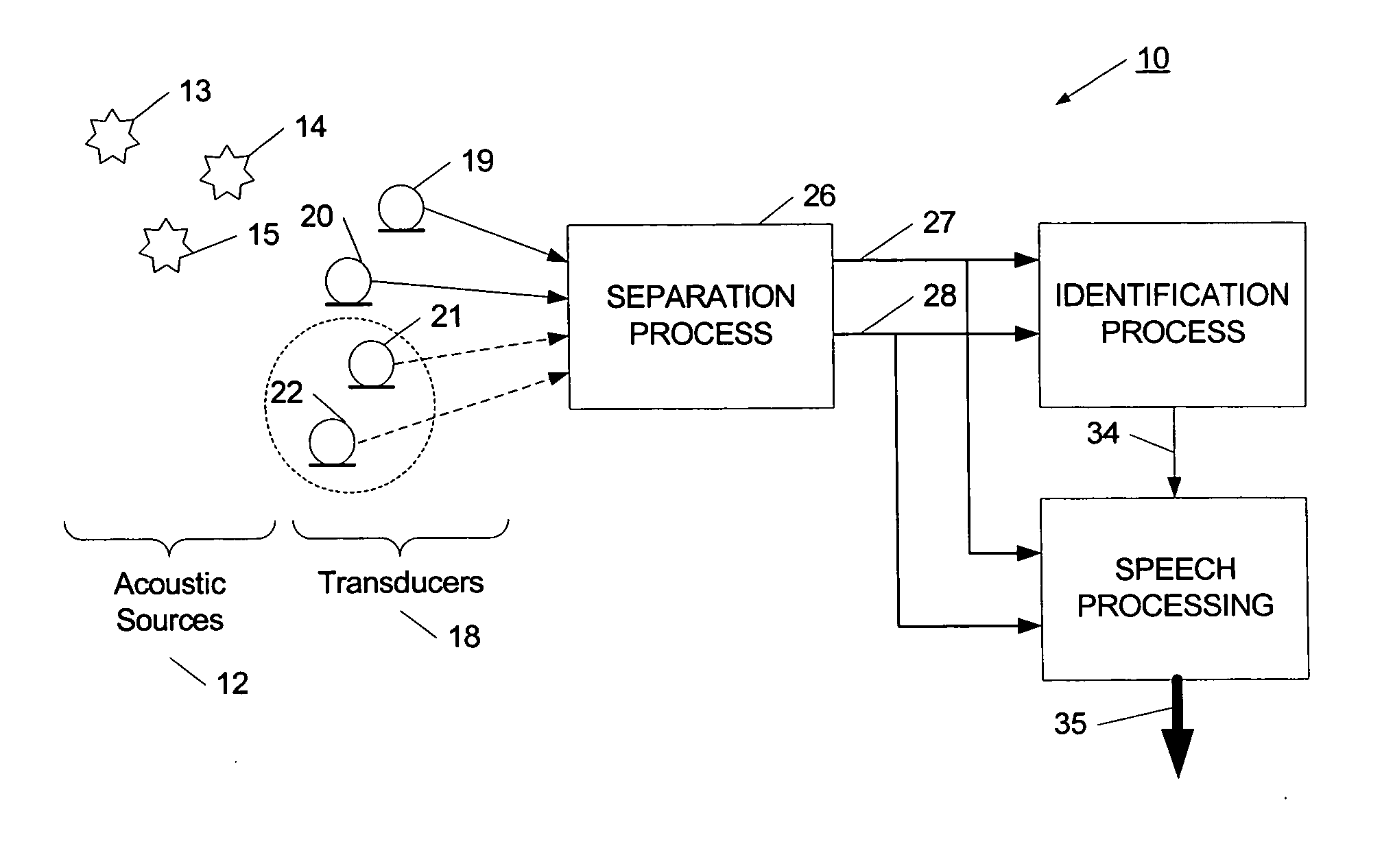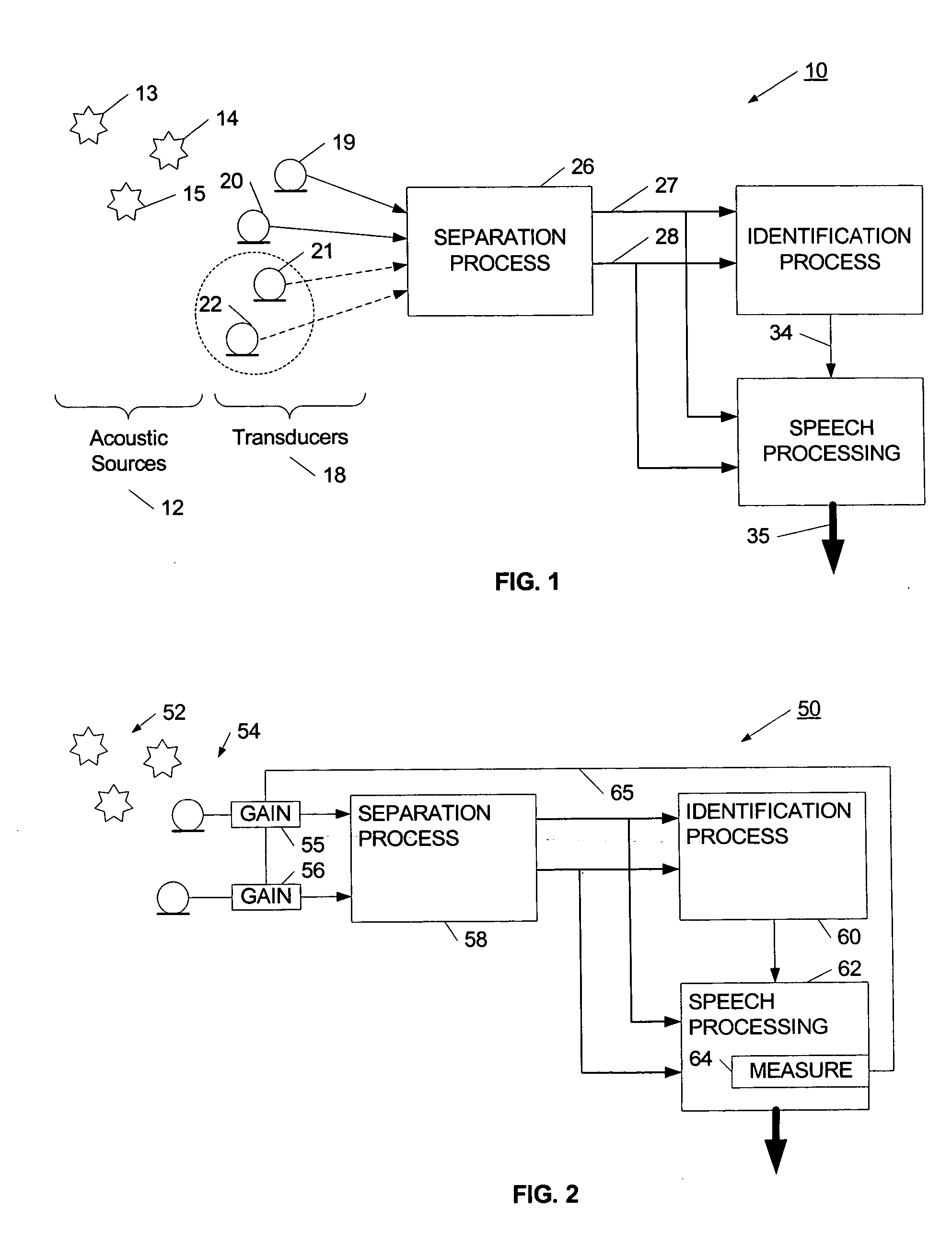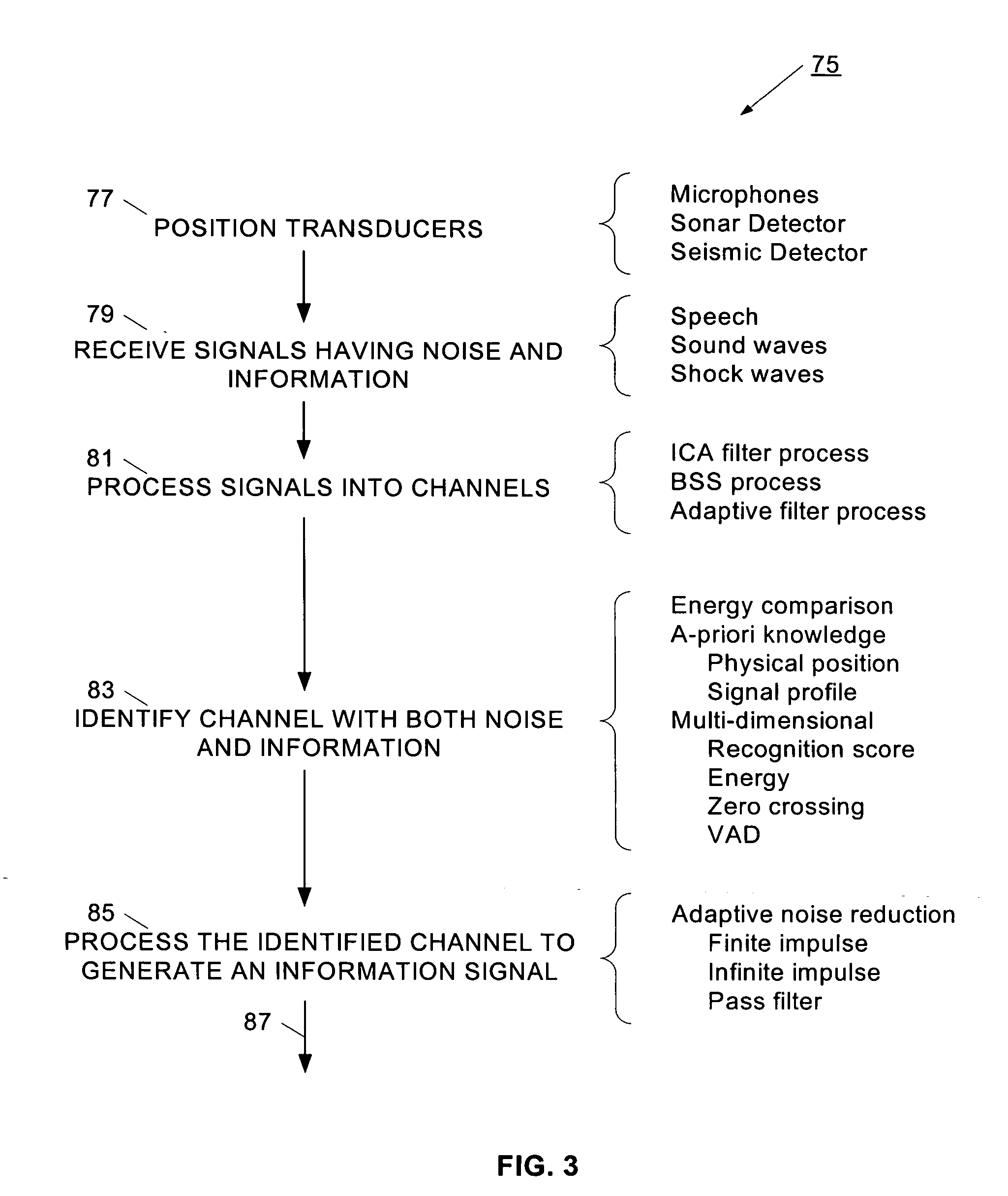Separation of target acoustic signals in a multi-transducer arrangement
- Summary
- Abstract
- Description
- Claims
- Application Information
AI Technical Summary
Benefits of technology
Problems solved by technology
Method used
Image
Examples
Embodiment Construction
Referring now to FIG. 1, a process for separating an acoustic signal is illustrated. More particularly, separation process 10 is useful for separating or extracting a speech signal in a noisy environment. Although separation process 10 is discussed with reference to a speech information signal, it will be appreciated that other acoustic information signals may be used, for example, mechanical vibrations, seismic waves or sonar waves. Separation process 10 may be operated on a processor device, such as a microprocessor, programmable logic device, gate array, or other computing device. It will be appreciated that separation process 10 may also be implemented in one or more integrated circuit devices, or may incorporate more discrete components. It will also be understood that portions of process 10 may be implemented as software or firmware cooperating with a hardware processing device.
Separation process 10 has a set of transducers 18 arranged to respond to environmental acoustic s...
PUM
 Login to View More
Login to View More Abstract
Description
Claims
Application Information
 Login to View More
Login to View More - R&D
- Intellectual Property
- Life Sciences
- Materials
- Tech Scout
- Unparalleled Data Quality
- Higher Quality Content
- 60% Fewer Hallucinations
Browse by: Latest US Patents, China's latest patents, Technical Efficacy Thesaurus, Application Domain, Technology Topic, Popular Technical Reports.
© 2025 PatSnap. All rights reserved.Legal|Privacy policy|Modern Slavery Act Transparency Statement|Sitemap|About US| Contact US: help@patsnap.com



